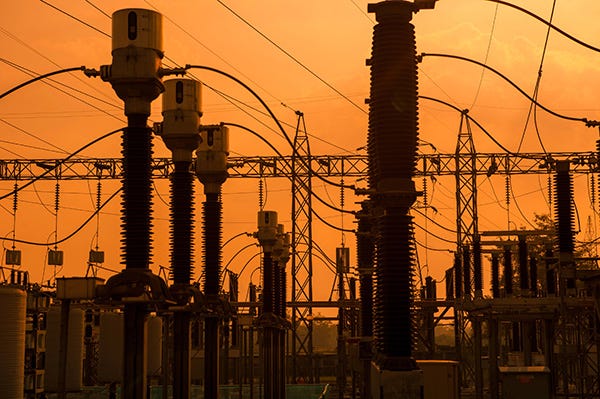Critical Infrastructure Is Seeing An Increase of Cyber Threats
via and all rights belong to ThreatJournal.com
Last week, the House Committee on Homeland Security’s Subcommittee on Cybersecurity and Infrastructure Protection held hearings to explore evolving cyber threats to U.S. critical infrastructure since the discovery of Stuxnet, the world’s first digital weapon, which targeted Iran’s nuclear program in 2010.
The session underscored the growing sophistication of cyberattacks and the urgent need to bolster defenses for operational technology (OT) and critical infrastructure systems.
Operational technology is the hardware and software systems that directly interact with and control physical equipment and processes, such as assembly lines, power grids, and water treatment facilities.
This differs significantly from Information Technology (IT), which focuses on managing and protecting digital information.
Critical Infrastructure in the Crosshairs
Fifteen years ago, Stuxnet demonstrated malware’s potential to cause physical damage, destroying 1,000 centrifuges at Iran’s Natanz facility.
This marked a shift in cyber warfare, highlighting vulnerabilities in industrial control systems.
Hearing witnesses, including Kim Zetter, author of Countdown to Zero Day, and Nate Gleason from Lawrence Livermore National Laboratory, emphasized that Stuxnet catalyzed an era of complex cyberattacks targeting critical infrastructure, such as power grids, pipelines, and water systems.
They noted a 30% global increase in such attacks last year, with nation-states like China and Iran alongside criminal networks exploiting vulnerabilities for espionage, disruption, or strategic prepositioning.
The hearing highlighted specific threats, such as China’s Volt and Salt Typhoon campaigns, which have infiltrated U.S. telecommunications and other networks, and a 133% surge in Iranian cyberattacks in May and June 2025.
Witnesses stressed the importance of reauthorizing the Cybersecurity Information Sharing Act (CISA 2015) and extending the State and Local Cybersecurity Grant Program to strengthen public-private partnerships and local cybersecurity.
90% of OT Infrastructure Unmonitored
Witnesses pointed out that only 10% of U.S. OT infrastructure is currently monitored, leaving significant vulnerabilities.
For instance, the investigation of a pipeline incident revealed 10,000 open, unprotected ports, underscoring the need for comprehensive OT asset inventories and assessments, implementation of basic cyber hygiene practices such as multi-factor authentication, and monitoring of supply chain security.
Small and mid-sized utilities were identified as particularly vulnerable due to limited resources and expertise.
Representative Andy Ogles (R-TN) expressed concern that these entities could be initial targets in a broader attack to destabilize electrical grids or water systems.
The witnesses also discussed the imbalance in cyber spending, with 95% allocated to IT systems and only 5% to OT, despite OT’s critical role in national security and community stability.
Robert Lee advocated for a balanced approach to offensive and defensive cyber strategies to deter adversaries, warning of escalatory risks if not carefully managed.
The hearing also addressed legislative efforts, such as the Cyber PIVOTT Act, which aims to address the shortage of 500,000 cybersecurity professionals through scholarships for two-year degrees in exchange for government service.
Additionally, the Strengthening Cyber Resilience Against State-Sponsored Threats Act, passed in December 2024, establishes a task force led by the Cybersecurity and Infrastructure Security Agency (CISA) to counter state-sponsored cyber threats, particularly from China.
The session underscored the need for proactive measures, streamlined regulations, and robust public-private partnerships to safeguard critical infrastructure against increasingly sophisticated cyber threats.
VIDEO: Fully Operational - Stuxnet 15 Years Later and the Evolution of Cyber Threats to Critical Infrastructure
DETAILS:
What: A Subcommittee on Cybersecurity and Infrastructure Protection hearing entitled, “Fully Operational: Stuxnet 15 Years Later and the Evolution of Cyber Threats to Critical Infrastructure.”
When: Tuesday, July 22, 2025, at 10:00 AM ET
Where: 310 Cannon House Office Building
WITNESSES:
Tatyana Bolton
Executive Director, Operational Technology Cyber Coalition (OTCC)
Kim Zetter
Author of Countdown to Zero Day: Stuxnet and the Launch of the World’s First Digital Weapon, Adjunct Professor, Georgetown University
Robert M. Lee
CEO and Co-Founder, Dragos
Nate Gleason
Program Leader, Lawrence Livermore National Laboratory
Witness testimony can be found here [downloadable, opens in our online library].
The hearing was livestreamed on YouTube and was open to the public and press [downloadable, link opens in our online library].
Press had to be congressionally credentialed and needed to provide a RSVP



